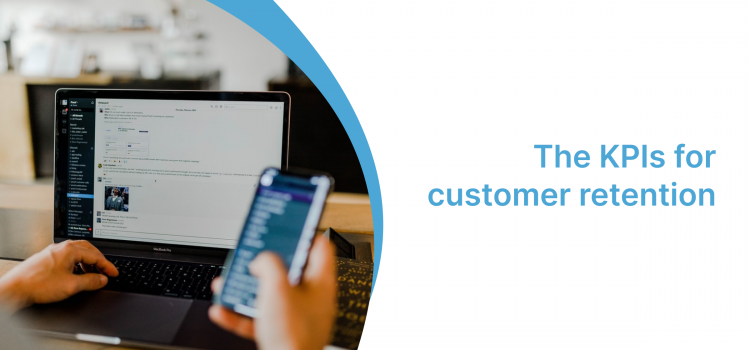According to recent research, 20% of your current customers can bring you 80% of your profits in the future. But for you, it’s better to try to keep your audience. In addition, after the pandemic period, most companies try in every possible way to reduce the cost of attracting new customers. And it also pushes businesses to maintain customer loyalty and satisfaction by providing them with a positive experience.
After all, what’s the point of investing in marketing campaigns to find new customers if you’re not going to save them later?
But the issue of customer retention is not so simple either because it is crucial to understand why your audience is constantly updated. And we will deal with this issue in this article. Let’s get started!
Table of Contents:
- Why is understanding customer retention metrics essential for company growth?
- How is customer retention measured?
- Top 5 customer retention metrics
3.1 User churn
3.2 MRR churn
3.3 Customer acquisition cost (CAC)
3.4 Customer lifetime value (LTV)
3.5 Customer retention rate
- In Summary
Why is understanding customer retention metrics essential for company growth?
Running a business blindly is a bad idea, so it’s best to end it immediately. And to open your eyes finally to what is happening inside your company, you cannot do without understanding your customers’ needs. And this is impossible without constantly studying the desire to improve customer retention rates.
No one says that attracting new customers is unnecessary, but this does not guarantee the success of your business even after 2-3 years. And if you do everything possible to keep each client, you guarantee stability and financial success for your business. To back up what has been said with facts, we note that even a 5% customer retention will allow you to increase revenue by at least 20% or even 90% shortly! Such prospects clearly favour trying to implement this approach in their activities.
How is customer retention measured?
Leaders of leading companies unanimously say that the more people come back to you to buy your product or service, the more likely you are moving in the right direction. And no matter how reasonable your acquisition rates are, you will fail soon if customers don’t come back to buy from you.
The most elementary way to understand the retention rate in your company is to measure the ratio of active buyers to the total number of buyers at the beginning of a certain period (month, year). So you will have at least a minimal idea about this issue.
Top 5 customer retention metrics
Our company has prepared for you a list of the 5 most vital metrics that are important for high-quality customer retention:
User churn
User churn is directly related to the total number of users. If your company offers customers only one subscription option, this indicator can coincide with the MRR churn.
Accordingly, the more subscription options on the platform, the more significant the difference between these two metrics. In this context, user churn represents the total number of churn customers over a fixed period. And many companies agree that this indicator is one of the fundamental ones for obtaining a complete picture of the company’s current position in the market and its immediate prospects.
If you put all your energy into attracting new customers for several months, you may get the wrong impression based on the churn of users. After all, even if you lose a lot of customers but find just as many new ones, you might think that everything is in order. But what happens when the peak of the customer base is reached? You will have to face the harsh reality.
MRR churn
If you own a SaaS company, you probably monitor the number of subscriptions to your platform. In particular, indicators of growth or decline. Therefore, if you want your business to remain profitable, you must clearly understand how many people you lose after a specific payment period.
And this metric is known as MRR churn, which means how much profit you lose in a certain past period. The lower this indicator, the more reliable and sustainable growth you are guaranteed.
Customer acquisition cost (CAC)
For thoughtful financial planning, you must clearly understand how much you spend on attracting one particular client. So you will more clearly understand how much you are losing invested money.
And understanding how much you lost money invested in attracting customers and what you could earn if you kept them gives an excellent incentive to reconsider your development strategy.
Customer lifetime value (LTV)
The company’s customers can be estimated according to their value. In other words, this metric gives platform owners an idea of how much each buyer can bring profit to the business. And for a company to be profitable, the lifetime value of a customer must outweigh the cost invested in acquiring them.
The more significant the difference in favour of lifetime value, the higher the enterprise’s income. Ideally, income should be at least three times the investment to enable companies to try new strategies and develop unique and risky campaigns.
Customer retention rate
Separately, the number of customers who, after a month / 3 months / six months, continue to use your services (for example, continue to pay a premium subscription to your platform every month) is calculated.
Pay cycles that constantly occur can distort the perception of this metric, so it is vital to adequately evaluate this indicator not separately but together with other retention metrics.
In Summary
Due to the growth of competition in all areas of activity, you should collect and analyze customer retention metrics to continue developing. And our company RFMcube willingly helps all companies striving for growth in this!
We help collect these metrics and visualize this data so that you understand in detail where to go. We at RFMcube want to be of service to you, so don’t hesitate to contact us. We will gladly help you!
